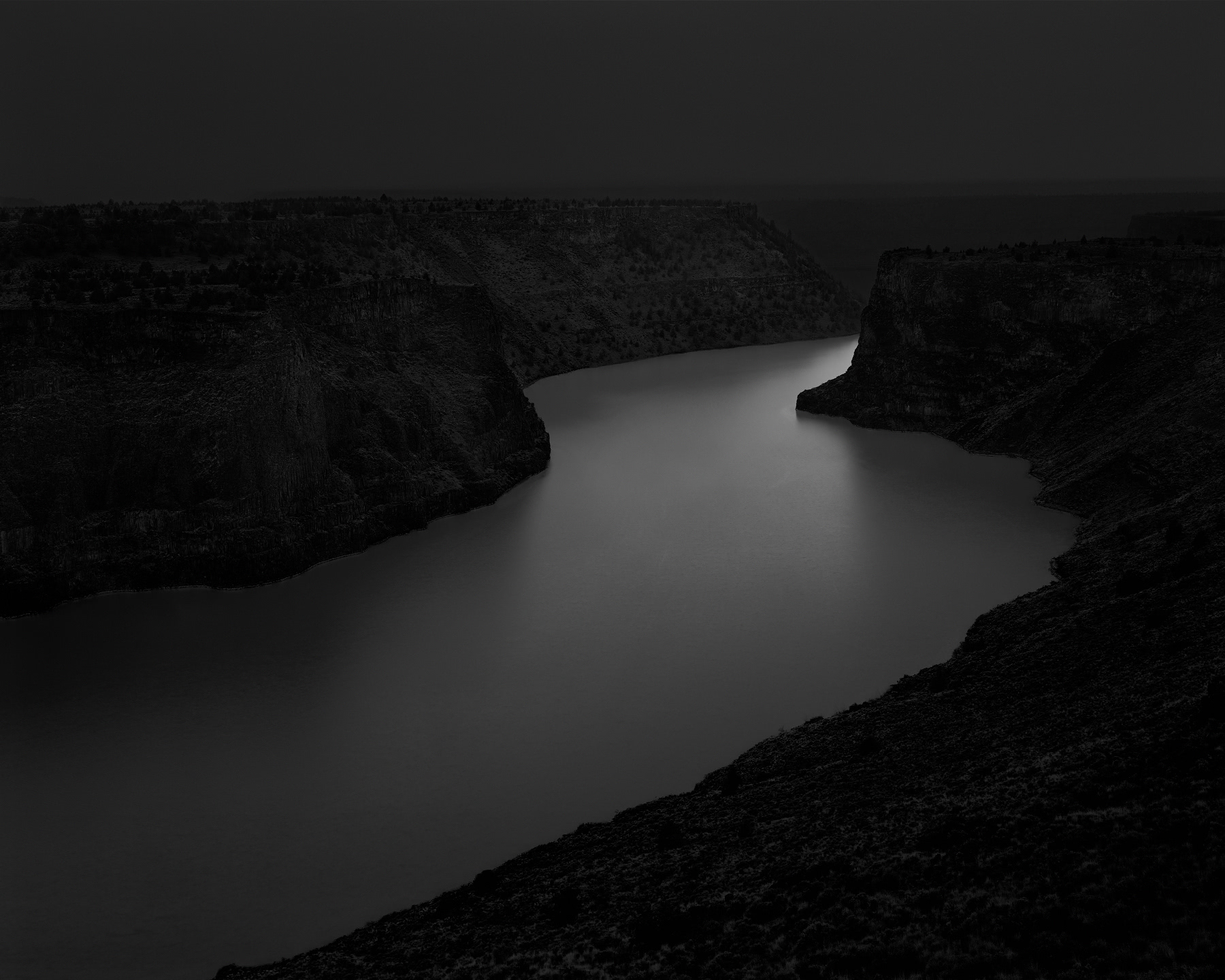River XIV, 2014 © Adam Katseff
Water Memory, an exhibition of enigmatic landscapes by Adam Katseff, on view at Robert Koch Gallery through October 28, troubles one of the medium’s long-running legacies and quietly comments on our fraught environmental stewardship.
Exhibition review by Roula Seikaly
River II, 2014 © Adam Katseff
A New England-native who moved to the west coast for graduate work at Stanford University, Katseff captures elemental subjects - water, sky, fire, and land - with minimalist precision. Rather than fill each frame of these large format images with dense detail, the artist provides generous viewing space which audiences are invited to fill with details, or memories, or possibly fears.
From its inception, photography has been used to capture both the particulars and generalities of the world humans inhabit. In addition to offering aesthetically pleasing scenes, the earliest landscape images were the product of both visual curiosity and the frank procedural requirement that the subject not move during the lengthy exposure times that antique processes demanded.
River III, 2014 © Adam Katseff
Following the chaos of the American Civil War, the landscape - as captured by practitioners including William Henry Jackson, Carleton Watkins, and Timothy O’Sullivan as he traveled throughout western lands with geological surveys led by Clarence King and George Wheeler - was (falsely) portrayed as “uninhabited,” or as a blank canvas onto which the dreams made real by Manifest Destiny were projected. In these early compositions, land and water became sites of actual or perceived knowledge. The high desert, rock formations, and now-abandoned Native American dwellings that were unfamiliar to people living in growing east coast cities were made “legible” by photographs and the scientific authority accorded to them. These locations, though rugged, suggest an innocence seemingly untainted by human presence.
River IV (right), 2014 © Adam Katseff
Prominent in Katseff’s work are sites that are invested with historical and cultural significance, including Gettysburg, Donner Lake and Half Dome as it presides majestically over Yosemite National Park. These images are noted for the lineage of naming natural spaces as a measure of passive control that photography advances, and because the pieces featured in Water Memory diverge from that practice.
Each of the compositions are identified by the title “River” and Roman numerals. These locations could be close, places where languid summer vacations are spent, or they could be far away and equally unfamiliar. What is conveyed via this choice is that these unnamed waterways, each unique, share the singular and ancient capacity to shape the spaces through which they pass, regardless of human intervention.
River V, 2014 © Adam Katseff
Installation photo courtesy of Robert Koch Gallery
River VI, 2014 © Adam Katseff
Photographing at night and thus with very little ambient light, Katseff’s attention and ours by extension is drawn to water as it twists and darts through encroaching darkness. Unlike nineteenth century photographers who applied aesthetic principles adopted from contemporary landscape painting in order to mediate photography’s too-sharp capture, Katseff’s compositions hint at more modern influences. Standing at a distance, the compositions almost resemble Barnett Newman’s zip paintings, in terms of both tonal interruption and the sense of movement on a two-dimensional ground that they convey.
River VIII, 2014 © Adam Katseff
While not an overt commentary on climate change, or how we treat the natural resources that make life in this country sustainable, it’s possible to see these dark compositions as a vision of what lies in store for us if we fail as environmental stewards. It’s not unreasonable to note that the details of rock formations carved and smoothed by moving water for thousands of years, and the plant life that juts from the ground as they are present in Katseff’s compositions could be all be lost. From this perspective, Water Memory could be regarded as an accomplished collection of work that that adds to and subverts the history of landscape photography, and envisions an environmental fate that may befall us if all the knowledge we’ve accumulated goes to waste.
River XI, 2014 © Adam Katseff
Installation photo courtesy of Robert Koch Gallery










